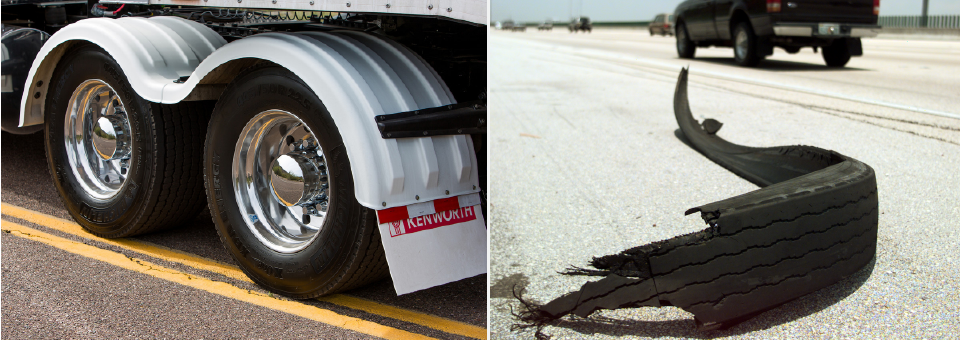You see them on Interstates, two-lane highways, asphalt roads, anywhere heavy trucks roll you’ll see what are known as “alligators” or simply “gators”. They’re those long strips of rubber that most drivers think have peeled away from moving tractor-trailer rigs. They can be a hassle and even a hazard, depending on their size. But heavy trucks may not be the culprit.
There are new studies, though, proving eighteen-wheelers may not be the culprits after all.
The American Trucking Association’s Technology and Maintenance Council did a thorough study of larger pieces of tire rubber that were picked up from highways around the country. According to Amy Fisher, a Council truck tire specialist, “Over one third of all roadside tire scraps in our surveys came from passenger and light truck tires, not heavy duty truck tires.” Fisher adds, “That’s especially significant, because the number of retreaded passenger and light truck tires is almost zero. So, these tire scraps couldn’t be the fault of the retreading process.”
So much for a number of long-cherished myths about those pesky “gators”, especially concerning those involving recapped tires. Some drivers have long believed that these “reconditioned” tires aren’t safe at highway speeds or in certain types of weather. Tire industry professionals say that properly retreated tires are every bit as safe as original rubber in similar conditions.
Big rigs do peel off those big rubber strips from time to time, though, and the ATA says that heat and road conditions aren’t usually the causes. A major enemy of heavy truck tires is under-inflation. Under-inflated tires can cause tread separations, loss of tire casing durability and create road hazards. Truckers who don’t top up their tires will probably also experience uneven wear, loss of fuel economy and higher downtime expenses.
Underinflated tires can be dangerous, too. The National Highway Traffic Safety Administration — using data gathered between 2005 and 2007 — conducted a study that found vehicles with tires underinflated by 25% or more were three times as likely to be involved in the crash linked to tire problems.
“Tire problems are inherently hazardous to vehicle safety,” the NHTSA report said. “When these problems emerge in the pre-crash phase, the time window for attempting a crash avoidance maneuver is normally very small.”
The heavy trucking industry pays considerable attention to tire safety. Select 1 Group, which operates nationwide in all kinds of weather, trains its drivers to inspect tires regularly and to maintain proper inflation at all times.




